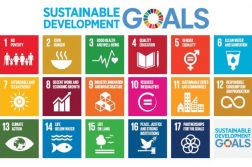Every company nowadays need to think their efficiency and profit. With purchasing and value chain thinking they can make better decisions with their capital. Value chain determines costs and affects profit.
Value chain is a chain of activities and relationships between a company, customers and partners by which a company obtain materials, creates goods or services, sells them, and after that offers services. The aim of each step of this chain is to create more value for the consumer.
Value chain includes two kinds of value-creating activities which are five primary activities and four support activities.
Primary activities are a group that contains the physical transformation, such as inbound and outbound logistics including distribution and handling of the final product, which the company delivers to its customers.
Michael Porter of Harvard was the first to describe the concept of value chain in his best-seller, Competitive Advantage: creating and sustaining superior performance (1985). He divides primary activities into five different categories which are:
Inbound logistics: By this activity a company brings materials into the business. Contains receiving, storing and disseminating inputs to the production process.
Operations: It is a manufacturing process. (At this stage the company converts materials into the final product.) Includes the activities which are needed for producing the final product such as machining, testing and packaging.
Outbound logistics: At this stage the company deliver the final product to the customers. Activities associated with distributing, warehousing and order processing of the finished goods.
Marketing and sales: Contains advertising, sales, selecting and connecting with distribution channel and pricing.
Services: Activities associated with serving customers and maintain the value of the product, for example part supply and product adjustments.
Primary activities are supported by Support activities which can be supporting either only one part of the primary activities or the whole primary process.

According to Porter support activities are divided into four groups:
Firm infrastructure: Supports the entire set of company processes through quality management, accounting, government and legal affairs, finance expertise and planning.
Human resources: Is active in both primary and support activities. It includes the whole human resource department.
Technology development: Tries to develop new ways of using technology in product design and systems. Technology is part of every activity group, more or less.
Procurement: Considers every aspects in purchasing in primary and support activities and tries to have reasonable prices in production, so firm can make a profit.
So, all this together makes a value chain which increase the value of the product or service. Value increase starts the very beginning when purchasing the raw materials. The main goal is to make process efficient by using all these tools to make business successful.
A company has to be aware of which of these activities give value. If some activities do not give any value they should not be performed. A company has also to make decisions concerning which activities are core to the company and which the company should outsource. Because the company itself does not have resources for everything.
Miia Ylimäki, Roosa Kemppinen, Anna Gorbunova



